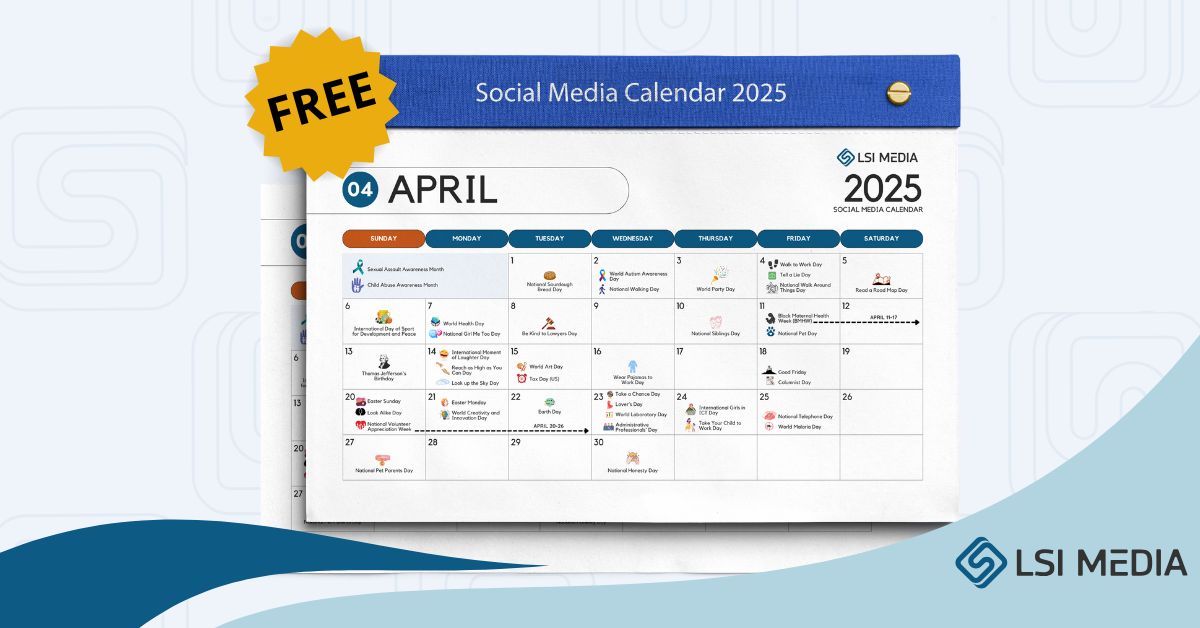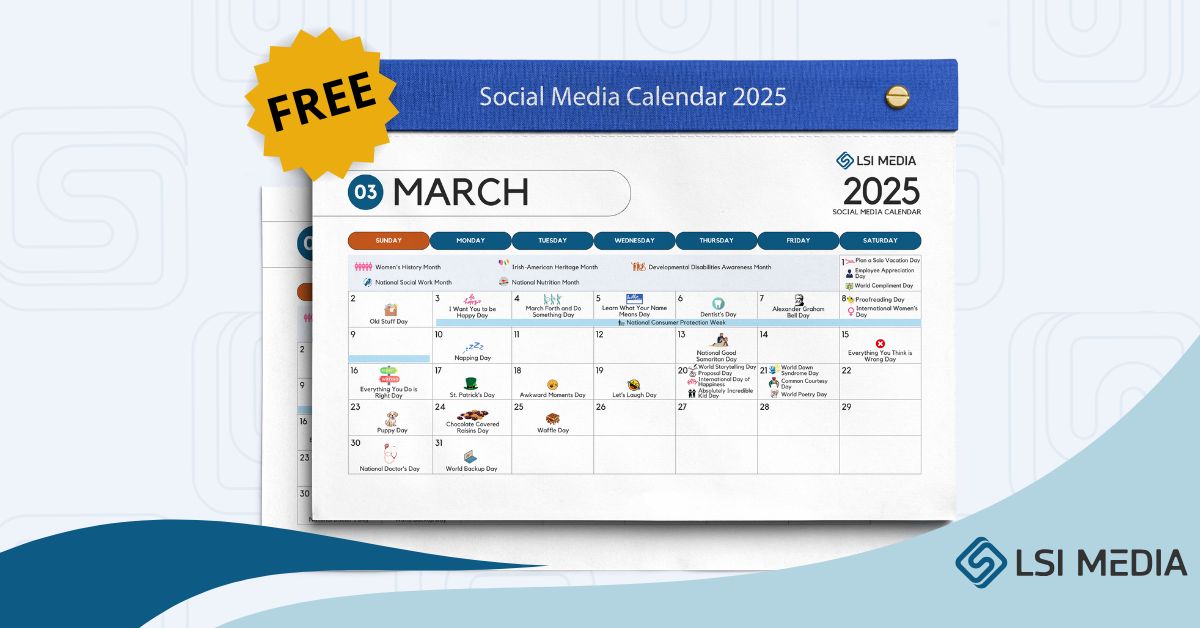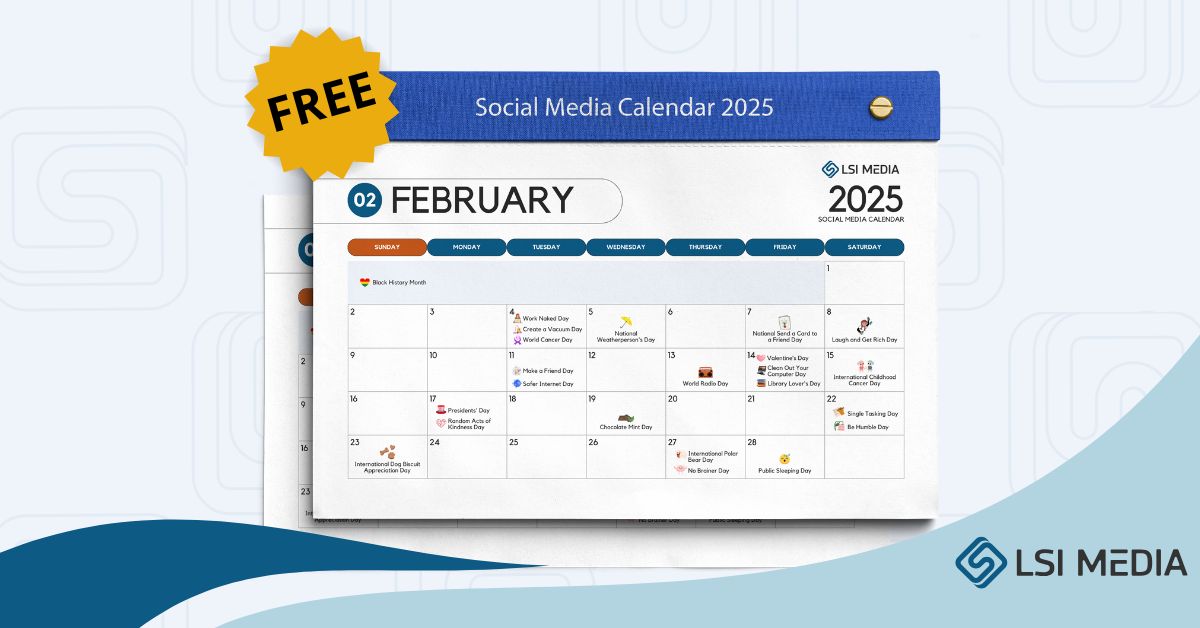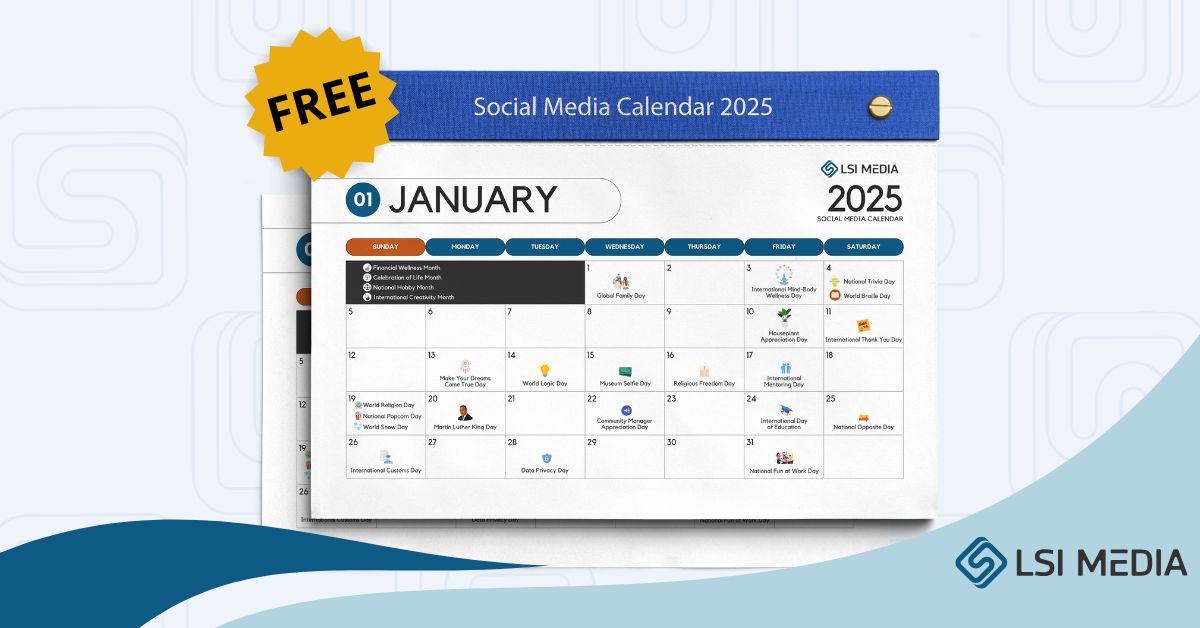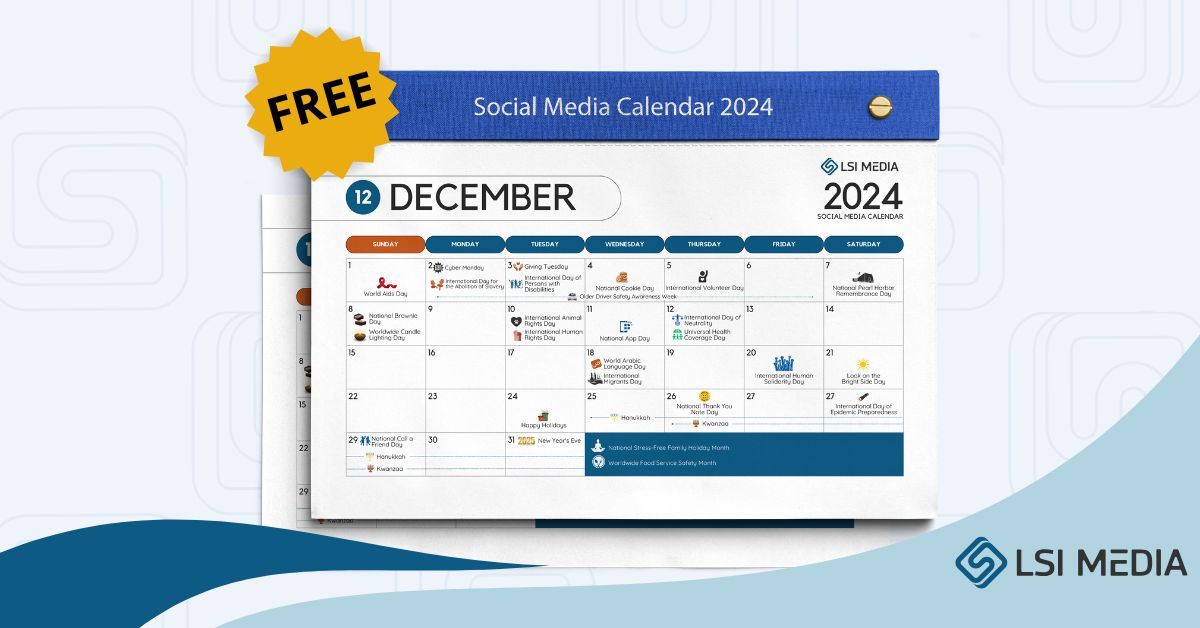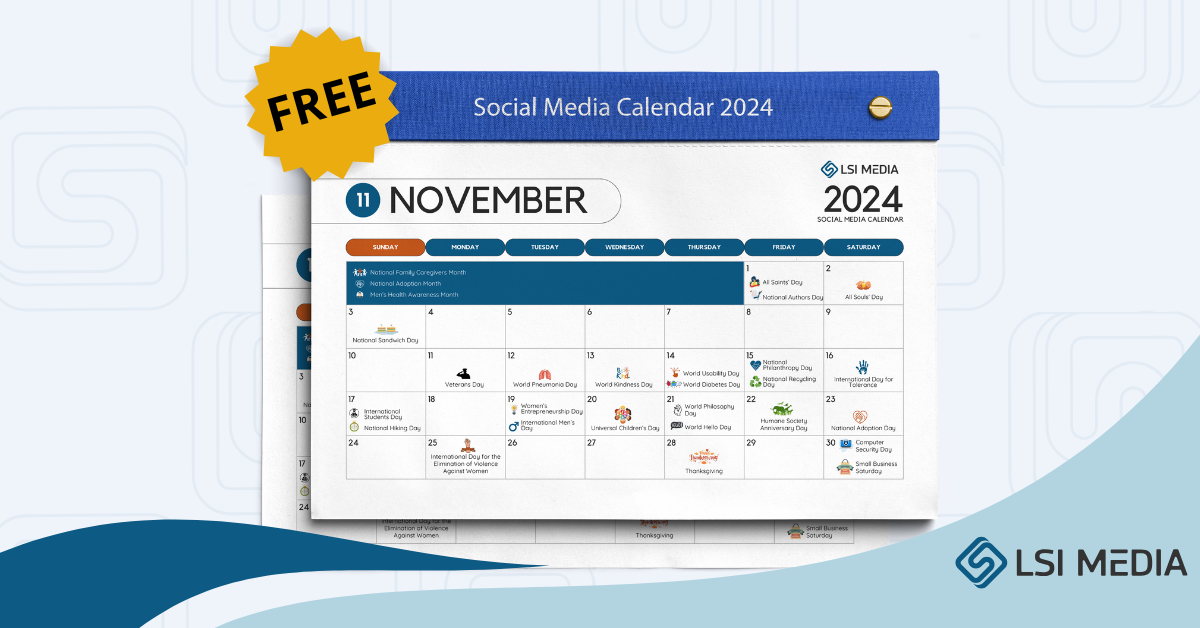[ez-toc]
Content Curation is an initiative that enables you to stream content from your marketing platforms consistently with the purpose of sharing your own perspectives and interacting with other thought-leaders.
Curation goes beyond conserving your time and resources, it fosters business relationships and opens a dialogue between you, the writer, and your target audience.
– LSI Media
“Curation” is one of those words that’s always conveyed coolness to me.
Take, for example, the job of curating art for a gallery or curating music for a soundtrack. Cool, right? Content curation is just as much fun — and just as important. But where do you get started on content curation? In this blog post, you’ll find a brief explanation of what it is, why it’s important, and a few tools you can use.
What is content curation?
For the uninitiated, content curation consists of finding material relevant to your audience from various sources and sharing it strategically through your communication channels. For example, writing a roundup blog post of great marketing examples would require you to curate strong content samples relevant to what you’re writing about. And while very cool, it can be tricky. Many social networks, news feeds, emails, and infographics full of such content can demand your time and attention.
That’s why the responsibility of content curation is important. Think of it as being a successful wedding DJ: Your selections can’t all be ad hoc and safe. After all, people can only hear Kool & The Gang’s “Celebration” so many times before the floor clears, and that sort of playlist isn’t personalized for your audience. But if you know your audience, you can gauge the room temperature and have the confidence to give the people what they want.
What makes a successful content curator?
1. Content curation should be personal.
The beauty of news roundup NextDraft is the personal touch and context that its chief curator, Dave Pell, gives to each story. I don’t just want a bunch of browsable links — I want to know why I should read this stuff and how it pertains to me. That personalized context creates a type of bond between curator and reader that something like simple link aggregators doesn’t humanize quite as much.
2. Content curation should build value.
Here’s a little secret: No matter which industry your customers are in, all of them want to stay informed but also save time. Just like you, they have demands and can’t possibly keep up with all the latest news in their industry — but they want to. Helping to solve this problem through personalized content curation presents a huge opportunity for brands to build relationships with their audience. If you can deliver a curated experience that saves your customers time in getting the information they need, you’ve taken a major step on the path of building trust and loyalty.
3. Content curation should offset promotional content.
Customers can grow tired of brands ceaselessly promoting their own wares, which is why progressive brands think beyond products or features. The relationship customers have with brands today transcends the product itself — after all, that’s part of the foundation of inbound marketing. So while a product may initially attract you to a specific brand, it’s what the brand holistically offers after the purchase — like great content or remarkable service — that keeps you around.
4. Content Curation Shouldn’t Take All Day
At last: We’ve arrived at our favorite tools for content curation. Thanks to a slew of websites and technologies, it’s never been easier to find external information that will serve as a resource for your customers. But they need to be prioritized — so here’s our list to help streamline your content curation efforts.
For Beginners
If you’re thinking, “Yeah, I occasionally share a relevant post with my customers when I find one,” congratulations — you’re curating content. Unfortunately, you’re not doing so on a sustainable scale that makes you a trusted source. But don’t worry — there are better ways to curate content for completely free beginners. Here are three simple sources of information to help you start getting in the habit of curating content without being overwhelmed by complex tools, subscription fees, or convoluted dashboards.
1. Flipboard
Flipboard is a mobile and desktop app that allows you to create mini-magazines with links to your favorite news stories, blog posts, or websites. After you create these magazines, you can set them to the public so other users can follow your content or even share them on other social media networks.
If you’re interested in showing that you’re in the know of news and hot trends related to your industry, you can create a Flipboard account and start creating magazines that your fans might like with news links from other publications they also might enjoy. You can also place your own blog posts or links into a Flipboard magazine, so users reading the stories there can also learn about your business.
Flipboard is free and easy to use. All you need to do is download the app, create an account, and tap “Create Magazine” to create your first piece of curated content. You can also look through the magazines of other users and share their stories in your own mini “publication with a quick tap.
2. Pocket
Pocket is a great place to get into the habit of accruing content to save and share later. Instead of a laundry list of bookmarks or countless emails you’ve sent to yourself with links, it keeps all your interesting images, articles, and videos in one place for reference.
You can group articles with tags, and the site’s built-in search functionality makes finding those articles easy. Plus, it integrates with over 500 other apps, like Evernote, for seamless integration. And as a bonus, Pocket tweets out their @PocketHits for the most-saved articles on their platform — a must-follow if you’re active on Twitter. For other “read-it-later” apps like Pocket, check out Instapaper.
3. Elink.io
Curating content for your email newsletter, website, or social media can be a time-consuming process. Collecting content from various websites and sharing them in a presentable way and context is key to successful content curation. elink.io is one tool that takes the pain out of content curation with ease and will save your hours.
This nifty tool allows anyone to save links on the go and turn them into beautiful shareable content. You can convert your links into a web page, embed them on a blog/website, or send them off as a beautifully curated newsletter. They have a whopping 30+ responsive templates that are easily interchangeable. With over 80,000 users worldwide, the link is one of the best tools for fast and beautiful content curation.
4. Twitter Lists
Twitter can be a streaming mess if you don’t organize the accounts you follow. That’s where Twitter lists come in handy — curated groups of Twitter users that you can categorize and follow separately from the rest of your feed. Here’s one that I created, which I continually manage and update. Even better, if you create a Pocket account, you can easily save articles from Twitter directly into your account.
Click here to learn how to start your first Twitter list.
5. Newsletters
Newsletters serve as a fantastic daily reminder to get your content curation done. For example, I follow HubSpot on Twitter but don’t always get a chance to see its tweets when I’m busy. Fortunately, HubSpot also offers an email subscription. That way, if I don’t catch something notable on social media, I’m likely to catch it on email.
Whatever industry you’re in, stay on the lookout for newsletter subscriptions. And if a good one doesn’t exist in your industry, that’s the perfect opportunity to create one. But before you start your own newsletter, learn from what other outlets are doing. Here are a few that are doing a great job in original content curation:
• Redef: Jason Hirschhorn, one of the pioneers in social media and formerly the co-president of MySpace, has launched a site curating the best in media, sports, fashion, music, and technology. Subscribe to one of Reder’s newsletters for a taste of one of the best in content curation.
• Quartz Daily Brief: Quartz has figured out how to make a text-heavy newsletter a stalwart in the news business with its Daily Brief. The beauty of the newsletter, because it’s text-based, is the cross-platform functionality. The Daily Brief loads quickly on phones, tablets, and desktops without heavy images, making it easy to read on any device.
• Internet Brunch: Digital agency Big Spaceship created Internet Brunch to help folks “find the best news, GIFs, and trends from across the Internet.” From holidays to current events to celebrity birthdays, this roundup is sure to cover the important stuff that helps readers stay in the loop.
For Intermediate Content Curators
Here are some great sources for when you’ve got the basics covered — resources like newsletters, social media, and read-it-later apps. But you’re looking for something a little more comprehensive. If you’re willing to pay for a subscription, these are the comprehensive, algorithmically generated digests of news, feeds, and content to check out.
6. Scoop.it
I like to think of Scoop.it is a nexus of content curation and social media, with a Pinterest-like user interface. Start with a topic of interest, and Scoop.it will generate the most relevant articles to view and share and suggest complementary topics and other Scoop.it users to follow.
The site sends a daily update of the topics you follow to help you keep pace with the most relevant articles to share. The free version allows you to monitor one topic for posting on two social media accounts. For a more robust platform that follows multiple topics for sharing across all your social channels, you might want to look into the paid options.
7. Feedly
Feedly is a supercharged RSS Feed. Here, content curation takes two routes: There’s web browsing 1.0, which is essentially visiting one site at a time, copying a URL, and pasting it accordingly. Then, there’s the news aggregation route that Feedly powers. By simply adding a few of your favorite sources to Feedly, you can aggregate and browse these feeds in one place from your desktop and mobile devices. You can find a visual tutorial here.
8. Sniply
Sniply is a conversion platform — by way of content curation. In a nutshell, it allows users to add a call to action to everything they share. “For example,” the site reads, “you can attach a button to the page that links to your own website so that people can discover you while they read.”
It’s also a custom link shortener, so you can create branded links short enough to share on Twitter and the like.
9. Quuu
Quuu is free software that integrates with most major social media scheduling tools, including HubSpot. The tool analyzes your social posts, platforms, and channels and recommends only content for you to share either in your integrated scheduler’s dashboard or on your account on its website. You can also set Quuu to auto-pilot and automatically schedule out Tweets or social posts with recommended content.
10. UpContent
With UpContent, which also integrates with HubSpot’s marketing tools, you can set up an account and create a dashboard where you’ll regularly see recommendations of content you can share from trusted resources. With the dashboard, you can select an interesting piece of content and then click on a dropdown list to mark whether you want to share it on a blog, social site, or other platforms.
For Advanced Content Curators
Now we’re getting into some serious, enterprise-level curation software. These solutions work best for companies looking for a proven platform capable of working with a team of users, editors, and content curators. Enterprise-level curation provides users with advanced algorithms to find quantitatively relevant content for their audiences, a centralized publishing platform, and the ability to customize the content, teams, and publishing channels.
11. Curata
The power of Curata lies in its ability to recommend and help users discover content relevant to their respective audiences without a ton of human labor. Users can fine-tune, customize, and categorize content sources for review and then distribute them, all from one central platform. The publishing and promotion allow you to repurpose curated content across your blog, social, newsletter, and automated marketing platforms.
12. PublishThis
Like Curata, PublishThis promotes the reliability of its algorithm to source relevant content for your audience–saving the time and headache that go with daily curation. In addition to customizing curated content to specific audiences, PublishThis also helps users manage and distribute original content and add conversions.
13. Scribble Live
Scribble Live, formerly known as Trapit, may have once been designed purely for content creation. Still, now, its capabilities have expanded into employee advocacy — tools that help employees “follow best practices” on social media, as well as helping internal leaders become established thought leaders — and social selling. Of course, the content element remains. Some of the major pillars of Scribble’s platform include the ability to discover, organize, personalize, and distribute content. That’s where social selling comes in — it helps users prospect, network, and build relationships by sharing the information that’s going to be most relevant to their targeted audiences.
Which Tool Is Right For You?
Before you select the best tools for your business, it’s important to understand the role content curation will play in your marketing operations and the size of your team. For example, if you’re a one-person marketing department, the beginner and intermediate options should suffice for your needs. As your business and team grow, content curation may play a larger role and require more powerful software.
At that point, some of the advanced tools will help save time curating and getting everyone on the same page. Regardless of your team or business size, content curation should become a part of your content marketing strategy. Great curators build trust with their audiences and become an indispensable resource as they help to sift through online information to distribute what’s worth reading.
In Conclusion
Content curation tools are essential for every marketer. With the abundance of information available online, it becomes crucial to filter and select the most relevant and valuable content for targeted audiences. These tools not only save time and effort but also enhance the effectiveness of content marketing strategies.
The 13 content curation tools mentioned in this article offer a diverse range of features and capabilities to help marketers curate, organize, and distribute content seamlessly. From comprehensive content discovery platforms like Feedly and BuzzSumo to visual bookmarking tools like Pocket and Pinterest, these tools cater to various aspects of content curation.
Additionally, social media management tools like Hootsuite and Buffer enable marketers to schedule and share curated content across different platforms, maximizing reach and engagement. Moreover, the analytics provided by these tools give insights into audience preferences and behaviors, helping marketers refine their content curation strategies.
By utilizing these content curation tools effectively, marketers can establish their authority in the industry, build credibility, and ultimately drive more traffic and conversions. Whether one is a seasoned marketer or just starting out, investing in these tools is a smart move to stay ahead in the ever-evolving world of content marketing.
FAQs:
1. What are content curation tools?
Content curation tools are software or platforms that help marketers discover, gather, organize, and share relevant content from various sources on the internet. These tools enable marketers to curate high-quality content that aligns with their brand or target audience.
2. Why do marketers need content curation tools?
Marketers need content curation tools to streamline their content creation process, save time, and provide value to their audience. These tools help marketers stay updated with the latest trends and industry news, curate content that resonates with their target audience, and establish themselves as thought leaders in their niche.
3. How can content curation tools benefit marketers?
Content curation tools offer several benefits to marketers, including:
- Saving time by automating content discovery and aggregation.
- Enhancing content quality by curating the best content from trusted sources.
- Building authority and credibility by providing valuable curated content to their audience.
- Increasing engagement and social shares by sharing relevant and timely content.
- Improving SEO and driving organic traffic by leveraging curated content.
4. What features should marketers look for in content curation tools?
When choosing content curation tools, marketers should consider the following features:
- Content discovery: Tools that have advanced search capabilities to find relevant content.
- Content organization: Tools that offer easy categorization, tagging, and organizing of curated content.
- Social media integration: Tools that allow seamless sharing of curated content on social media platforms.
- Content scheduling: Tools that enable marketers to schedule content distribution at optimal times.
- Analytics and reporting: Tools that provide insights into content performance and engagement metrics.












